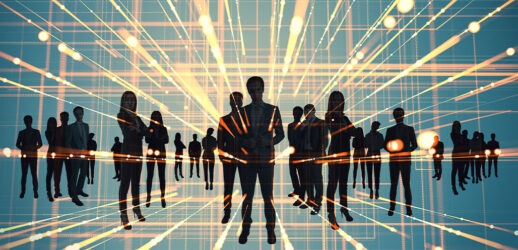Ready or not, robots, facial recognition and mobile registration are here
The on-demand culture is infiltrating travel, hospitality and events. Walking up to a counter or desk to check in is becoming obsolete. Here are a few ways meeting professionals and hoteliers can incorporate sci-fi to get guests to their rooms and meetings in a flash.
Robots
Who would have thought a hotel would go back to the prehistoric era to be forward-thinking? That’s the case at Japan’s Henn na Hotel Maihama Tokyo Bay, which is almost completely operated by multilingual robotic dinosaurs. A friendly T. rex at the front counter will gladly check you in for your stay. The Jurassic-themed hotel believes this model provides guests the ultimate in efficiency.
Hotels throughout the world are adding robots to their staffs to complement—or replace—services offered by humans. Autonomous relay robots, such as Jeno and Jena at two of Shangri-La’s Hotel Jen properties and eight TUG robots created by Aethon at the new Sheraton Los Angeles San Gabriel Hotel, can perform such functions as delivering room service. At Mandarin Oriental, Las Vegas, new team member Pepper interacts with guests by answering questions, processing human expressions and providing entertainment.
Facial Recognition
Meeting professionals and hotel chains are integrating facial recognition technology used to unlock Apple iPhone X to speed up the check-in process. “Zenus Biometrics is using face recognition for event registration, claiming increases in registration speed of up five times faster,” says meetings technology expert Corbin Ball. “They are licensing their technology to a number of registration companies, so you may see this at an event near you.”
Event management software company Etouches revolutionized the way attendees check-in and network with the wearable Loopd smart badge, which uses Bluetooth technology to register guests and take attendance at sessions. But the platform is embracing emerging facial recognition technology, as well. “On the event registration front, we are starting to see facial recognition technology as a method for attendees to check in and retrieve their credentials,” says Mike Tenholder, vice president of channel and partner management for Etouches. “It helps to expedite the check-in process, cutting the time down to seconds.”
Mobile app GTRIIP, which has offices in San Francisco and Singapore, debuted selfie check-in capability at the Singapore Tourism Board conference in November, according to The Straits Times. It was heralded as a way to better serve customers’ changing expectations and save on humanpower.
Selfie check-in has also taken to the skies. Delta’s Brazilian partner airline GOL Linhas Aereas Inteligentes was the first in the world to introduce the feature in its app, in June. “Selfie check-in is an example of GOL’s new model, which seeks to better respect our customers’ time by providing fast and convenient services, recognizing them as the central focus of our business,” says Mauricio Parise, GOL’s director of marketing. “We are not just following a trend. We are always seeking innovative ways to deliver more value to our customers through technology.”
Just like snowflakes, no two faces are completely alike. Even identical twins have minute differences. This keeps facial recognition secure, but planners have to decide which platform is the most secure to entrust attendees’ personal information.
Mobile
Smartphones can also be used for check-ins—via text message. For instance, at participating Aloft hotels, SPG members receive a text with room-number assignment on the day of arrival. They can head directly to their rooms and enter keylessly with a phone or an Apple Watch.
“Some chains are testing advanced check-in via the hotel’s mobile app. This allows the guest to by-pass the front desk and pick up a physical room key at a kiosk (think ATM for room keys). Mandalay Bay in Las Vegas does this,” Tenholder says. “Some chains are taking it a step further by turning the same mobile app into a virtual key. Once checked in, hotel guests simply swipe their phones near the door handle of their rooms to gain access. The Hilton near Hilton’s headquarters in McLean, Virginia, does this.”
Pros and Cons
Many other industries have long offered patrons an alternative to being helped by an employee. We have a choice of teller versus ATM at banks, box office versus ticket machine at movie theaters, cashier versus self-checkout at grocery stores and kiosks versus counters at airports.
“The goal of technology should be to make the business process more efficient,” Ball says. “They can be set up in remote locations, such as in multiple hotels rather than having to come to a central registration area to pick up the badge.”
According to Etouches, some meeting destinations have created a “smart city,” which sets up self-help check-in kiosks in public spaces, such as airports, to enable guests to retrieve badges as soon as they step off the plane.
As with everything meeting-planning related, it’s important to have a contingency plan in the form of old-fashioned paper guest lists. But if all goes smoothly, you can kiss those tedious spreadsheets, long lines and antsy attendees goodbye, and utilize a tablet-based system to get everybody where they need to be quickly.





